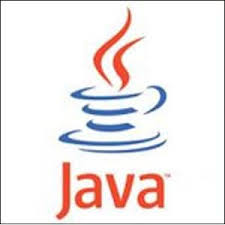Java source code is always stored in files with the extension .java. Once you have created the source code for a program and saved it in a .java file, you need to process the source using a
Java compiler. Using the compiler that comes with the JDK, you would make the directory that contains your Java source file the current directory, and then enter the following command:
javac MyProgram.java
Here, javac is the name of the
Java compiler, and MyProgram.java is the name of the program source file. This command assumes that the current directory contains your source file. If it doesn’t, the compiler won’t be able to find your source file. It also assumes that the source file corresponds to the Java language as defined in the current version of the JDK. There is a command-line option, -source, that you can use to specify the Java language version, so for JDK 5.0, the command above to execute the compiler is equivalent to:
javac -source 5 MyProgram.java
Note that you can also use 1.5 as the value with the source command-line option, in which case you could write the command like this:
javac -source 1.5 MyProgram.java
In practice you can ignore the -source command-line option unless you are compiling a Java program that was written using an older version of the JDK. For example, to compile code written for JDK 1.4 you would write:
javac -source 1.4 oldSourceCode.java
Here’s a simple program you can try out the compiler on:
public class MyProgram {
public static void main(String[] args) {
System.out.println(“Rome wasn’t burned in a day!”);
&nb}
}
This just outputs a line of text to the command line. As this is just to try out the compiler, I won’t explain how the program works at this point. Of course, you must type the code in exactly as shown and save the source file as MyProgram.java. If you have made any mistakes the compiler will issue error messages. If you need to override an existing definition of the CLASSPATH environment variable - perhaps because it has been set by a Java development system you have installed - the command would be:
javac -classpath . MyProgram.java
The value of CLASSPATH follows the -classpath specification and here it is just a period. This defines just the path to the current directory, whatever that happens to be. This means that the compiler looks for your source file or files in the current directory. If you forget to include the period, the compiler will not be able to find your source files in the current directory. If you include the -classpath . commandline option in any event, it will do no harm. Note that you should avoid storing your source files within the directory structure that was created for the JDK, as this can cause problems. Set up a separate directory of your own to hold the source code for a program and keep the code for each program in its own directory.
Assuming your program contains no errors, the compiler generates a bytecode program that is the equivalent of your source code. The compiler stores the bytecode program in a file with the same name as the source file, but with the extension .class. Java executable modules are always stored in a file with the extension .class. By default, the .class file will be stored in the same directory as the source file. The command-line options we have introduced here are by no means all the options you have available for the compiler.
You will be able to compile all of the examples in the blog just knowing about the options we have discussed. There is a comprehensive description of all the options within the documentation for the JDK. You can also specify the -help command-line option to get a summary of the standard options you can use. If you are using some other product to develop your Java programs, you will probably be using a much more user-friendly, graphical interface for compiling your programs that won’t involve entering commands such as that shown above. However, the file name extensions for your source file and the object file that results from it will be just the same.
